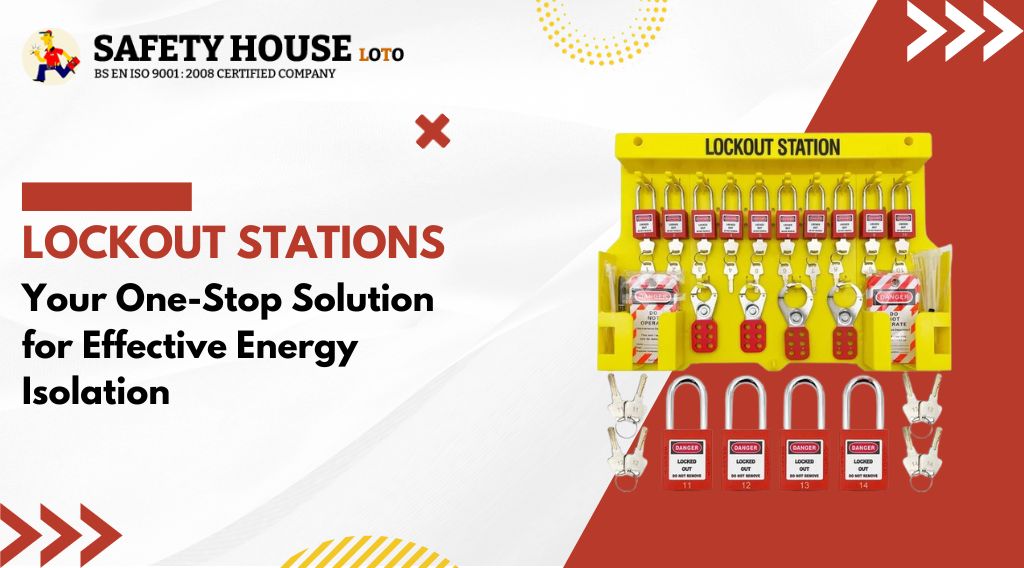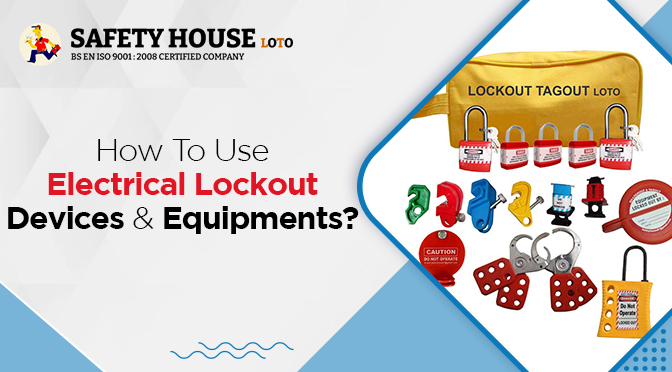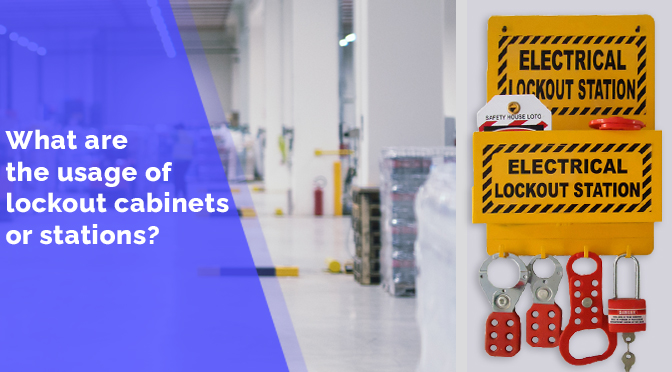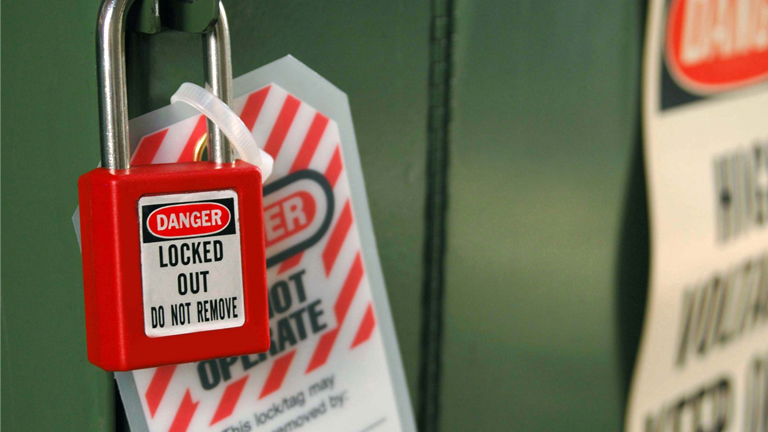
The Cost of Ignoring Lockout Stations: Accidents, Fines & Lost Productivity
Introduction
Safety should always be paramount in industrial environments. Despite this, lost consideration for Lockout Stations by many businesses could lead to dire consequences. Lockout products ensure that machinery/populated devices do not start up unexpectedly during maintenance which can lead to energy releases. Failure to follow proper lockout procedures are a leading cause of workplace accidents and injuries, resulting in hefty fines and lost productivity. This blog will talk about the consequences of ignoring Lockout Station and how high-quality solutions from a leading manufacturer of lockout products is an imperative for workplace safety.
Lockout Stations: Protecting Workers and Preventing Workplace Accidents
Lockout Stations are centrally located units that house key lockout products, such as padlocks, tags, and hasps. This prevents unnecessary accidents of the equipment turning on, as employees have immediate access to safety devices near these stations. Without proper lockout measures in place, unaware workers may interact with energized machinery, resulting in serious injury or death.
Key Benefits of Lockout Stations:
- Prevention of Accidents: Ensures machinery remains inoperable during maintenance.
- Compliance with Safety Regulations: Meets OSHA and industry standards to avoid legal penalties.
- Improved Organization: Keeps lockout products in one accessible location.
- Enhanced Productivity: Reduces downtime by streamlining the lockout process.
The High Cost of Neglecting Lockout Stations
Ignoring the need for Lockout Stations can have far-reaching consequences for businesses. From worker injuries to financial penalties, the risks are significant.
1. Workplace Accidents and Injuries
Failing to follow lockout procedures puts workers at an increased risk for electrical shock, crushing injuries, burns, or amputations. Industrial machinery functions on high energy, and a small mistake can have deadly consequences. Checking the working Mechanics and Equipments Prevent the risk of Hazards Implementing proper Lockout stations will get you rid of these risks, ensuring a safer work environment.
2. Legal Consequences and Heavy Fines
There are also strict guidelines on lockout procedures imposed by regulatory bodies. Non-compliance with safety guidelines can cost hefty fines and legal treats. OSHA and similar agencies around the world require the use of lockout products to help prevent on the job injuries. Failing to comply can lead to loss of money but can also ruin a company’s image.
3. Reduced Productivity and Downtime
Accidents caused by improper lockout procedures can halt production for hours or even days. Workplace injuries lead to investigations, equipment shutdowns, and workforce disruptions, all of which negatively impact productivity. Investing in high-quality Lockout Station from a reputable manufacturer of lockout products can prevent these issues and keep operations running smoothly.
Choosing the Right Lockout Stations for Your Business
Selecting the right Lockout Station is essential for effective energy control. Here are some factors to consider when choosing lockout solutions:
1. Assess Your Workplace Needs
Different industries require different lockout solutions. Identify the specific hazards in your workplace and choose lockout products accordingly.
2. Opt for High-Quality Materials
Durability is key when it comes to lockout products. Choose stations made from industrial-grade materials that can withstand harsh environments.
3. Ensure Compliance with Safety Standards
Always source Lockout Stations from a trusted manufacturer of lockout products that meets industry regulations. Ensuring compliance can protect your business from legal repercussions.
4. Customization for Efficiency
Custom Lockout Stations tailored to your workplace can enhance safety and efficiency. Choose a solution that fits your specific operational needs.
Proper Implementation and Maintenance of Lockout Stations
Once Lockout Stations are installed, regular maintenance and employee training are necessary to maintain safety standards.
1. Employee Training and Awareness
Workers must be trained on the proper use of Lockout Stations and lockout products. Regular safety drills can reinforce the importance of lockout procedures.
2. Routine Inspections
Regular checks ensure that lockout products remain in good condition and are readily available when needed.
3. Updating Lockout Procedures
Workplace hazards evolve, and so should lockout protocols. Keep safety measures updated to address new risks effectively.
Conclusion
Accidents, financial loss, and loss of productivity are dire consequences of ignoring Lockout Stations. The workforce contains tools and machinery to operate in daily activities; therefore, quality lockout products are mandatory for safety purposes and corporate laws. A reliable manufacturer of lockout products like Safety House Loto will offer durable and effective products designed to meet unique business requirements. Implementing Lockout Stations effectively before any incidents occur is not only a legal requirement, but fundamental in protecting your workforce and preventing disruption in the workplace.

Top Features to Look for in a Reliable Lockout Station
When it comes to industrial safety, ensuring the protection of employees during maintenance or repair work is a top priority. A Lockout Station plays a crucial role in achieving this by storing Lockout Tagout (LOTO) products in a centralized, easily accessible location. Choosing the right lockout station is vital for maintaining safety standards, preventing accidental startups, and ensuring compliance with regulations. In this blog, we’ll explore the key features to look for in a reliable lockout station, particularly for manufacturers of lockout products like Safety House Loto.
1. Durable and Weather-Resistant Material
One of the most critical aspects of a reliable lockout station is its durability. The station should be made from high-quality, impact-resistant materials to withstand harsh industrial environments. Depending on the location where it will be used (indoor or outdoor), you might need a lockout station that is resistant to extreme weather conditions like rain, heat, and corrosion. A durable lockout station ensures longevity and continuous protection of lockout products, preventing unnecessary wear and tear.
Why Durability Matters
Durability reduces the frequency of replacements and ensures that lockout devices remain protected and ready for use when needed. This is particularly important in high-activity environments where lockout products are used frequently.
2. Ample Storage Capacity
A good lockout station should offer enough storage space to accommodate all essential lockout products like padlocks, tags, lockout hasps, and lockout devices for electrical equipment. Depending on the needs of your facility, the station should come in different sizes to allow for flexibility in storage. Safety House Loto, as a leading manufacturer of lockout products, designs lockout stations with varying capacities to meet the diverse needs of industries.
Why Storage Matters
Proper storage ensures that all lockout devices are neatly organized and easily accessible during emergencies. It also prevents misplacement, ensuring that equipment remains available for authorized personnel during lockout procedures.
3. Customization Options
No two workplaces are the same, and neither are their lockout needs. A customizable lockout station allows companies to design a storage system that fits their unique requirements. Features such as customizable compartments, modular designs, and additional space for future expansion can make a lockout station more adaptable.
Benefits of Customization
Customization not only enhances the station’s efficiency but also allows you to add or remove components based on the evolving safety needs of your facility. It makes the lockout station more user-friendly and practical for specific industry demands.
4. Clear Labeling and Organization
An efficient lockout station must have clear labeling to identify each lockout device’s location. This makes it easy for employees to quickly find the required equipment during critical maintenance or servicing tasks. Color-coded sections and compartments also improve organization, enabling workers to immediately locate the necessary lockout products.
The Role of Organization in Safety
Clear labeling minimizes downtime during lockout procedures, ensures compliance with safety regulations, and reduces the chances of human error during equipment lockout.
5. Compliance with Safety Standards
A reliable lockout station must adhere to industry regulations such as OSHA (Occupational Safety and Health Administration) standards. Compliance ensures that the station and its components meet specific safety guidelines, protecting workers from accidents caused by unexpected equipment startups.
Importance of Compliance
Non-compliance with safety standards can result in legal complications, penalties, and increased risks to worker safety. Choosing a lockout station that meets regulatory requirements ensures that you’re prioritizing safety and adhering to best practices.
6. Visibility and Accessibility
A lockout station should be highly visible and located in an area that is easily accessible to all relevant employees. Bright colors, such as yellow or red, are often used to ensure that the station stands out in the work environment. Additionally, it should be mounted at a height where employees can quickly grab the necessary lockout devices.
Ensuring Visibility
Visibility improves response time during emergencies and ensures that the lockout station is always within reach, allowing workers to implement safety measures efficiently.
7. Portability for Flexible Use
In certain industries, having a portable lockout station can greatly improve operational efficiency. Portable lockout stations allow workers to take essential lockout devices directly to the area where maintenance is being performed. This feature is particularly useful for large facilities where access to a fixed lockout station might not be convenient.
Benefits of Portability
Portability allows for quick and easy transportation of lockout products, enhancing the overall safety of maintenance procedures in large or spread-out work environments.
Conclusion
Choosing the right lockout station is a critical decision for any facility that prioritizes safety. By focusing on features like durability, storage capacity, customization, and compliance, companies can significantly improve their lockout procedures and ensure a safer working environment. Safety House Loto, a trusted manufacturer of lockout products, offers high-quality lockout stations that meet industry standards, helping organizations protect their workers and maintain compliance.
By investing in a reliable lockout stations, industries can not only enhance the safety of their employees but also streamline their lockout/tagout procedures, making their operations more efficient and secure.

Choosing the Right Lockout Station: Factors to Consider for Your Industry Needs
Essential Factors for Selecting the Best Lockout Station for Your Industry
In industrial settings, prioritizing worker safety is crucial. One critical aspect of maintaining workplace safety is the implementation of effective lockout/tagout (LOTO) procedures. A key component of any LOTO system is the lockout station, which organizes and stores lockout devices. Choosing the right lockout station for your specific industry needs can significantly enhance safety and compliance. Here are some essential factors to consider when selecting a lockout station.
Understanding Lockout Stations
Lockout stations are centralized storage units designed to hold and organize lockout devices such as padlocks, tags, lockout hasps, and other necessary equipment. These stations ensure that all necessary tools are readily available, promoting efficiency and safety during maintenance and repair activities.
Assessing Your Industry’s Needs
1. Type of Equipment
The type of machinery and equipment in your facility greatly influences the kind of lockout station you require. Different machines may require specific lockout devices, so it’s crucial to inventory your equipment and determine the appropriate lockout tools needed. For example, electrical equipment may need circuit breaker lockouts, while mechanical machinery might require valve lockouts.
2. Frequency of Use
Consider how often lockout procedures are performed in your facility. High-frequency lockout activities necessitate a robust and easily accessible lockout station. In contrast, for occasional use, a more compact station might suffice. Evaluating the frequency of use helps in determining the size and complexity of the lockout station required.
3. Number of Employees
The number of employees who will be using the lockout station also plays a significant role in your choice. A larger workforce may need a more extensive station with multiple lockout devices to ensure that everyone has access to the necessary tools when needed.
Key Features to Look For
1. Durability
A lockout station must be durable to withstand harsh industrial environments. Look for stations made from robust materials like high-impact plastics or metals. Durability ensures the station remains intact and functional over time, providing reliable service.
2. Organization
Effective organization is critical for a lockout station. It should have designated spots for each lockout device, making it easy to find and return items. Stations with clear labeling and compartments for different devices can significantly enhance efficiency and prevent misplacement of tools.
3. Accessibility
A lockout station should be easily accessible to all employees. Consider its placement in the facility – it should be in a central location that is convenient for workers. Wall-mounted stations are often a good choice as they save space and keep the devices at eye level.
4. Capacity
Ensure the lockout station has enough capacity to store all the necessary devices. A station that is too small can lead to clutter and inefficiency, while an oversized station might be unnecessarily costly. Match the station’s capacity with your specific needs to maintain an organized and functional setup.
Customization Options
1. Industry-Specific Solutions
Different industries have unique requirements, and customizable lockout stations can address these needs. Some lockout suppliers offer stations tailored to specific industries, ensuring that all necessary devices are included and appropriately organized.
2. Expandability
As your facility grows or changes, your lockout needs may evolve. Choose a lockout station that allows for expandability. Modular stations that can be easily added to or reconfigured provide flexibility for future adjustments.
Choosing the Right Lockout Supplier
1. Reputation and Reliability
Select a lockout supplier with a solid reputation for quality and reliability. A reputable supplier will offer durable, high-quality lockout stations and devices, ensuring long-term safety and compliance.
2. Customer Support
Good customer support is crucial when selecting a lockout supplier. They should provide comprehensive assistance, from helping you choose the right station to offering after-sales support. A supplier with excellent customer service can be a valuable partner in maintaining workplace safety.
3. Compliance with Standards
Ensure that the lockout station and devices comply with relevant safety standards and regulations. Compliance guarantees that the tools meet industry requirements and provide the highest level of safety for your workers.
Conclusion
Choosing the right lockout stations is a critical step in enhancing workplace safety and ensuring compliance with LOTO procedures. By considering factors such as the type of equipment, frequency of use, number of employees, and key features like durability, organization, and accessibility, you can select a lockout station that meets your industry needs. Additionally, partnering with a reputable lockout supplier, like Safety House Loto, ensures you receive high-quality, reliable products and excellent customer support. Prioritize these considerations to create a safer and more efficient working environment.

Lockout Stations: Your One-Stop Solution for Effective Energy Isolation
In the realm of workplace safety, the ability to effectively isolate energy sources is a critical component of accident prevention. Lockout stations, a key offering among lockout tagout products provided by reputable lockout suppliers, play a pivotal role in ensuring the safety of workers while enhancing the efficiency of energy isolation procedures. In this article, we will explore the significance of lockout stations, their benefits, and how they contribute to a safer and more organized work environment.
Lockout stations, often referred to as lockout centers or stations, are specialized organizational units designed to centralize and streamline the management of lockout tagout (LOTO) equipment. These stations provide a dedicated and easily accessible location for storing lockout devices, padlocks, hasps, lockout tags, and other essential LOTO tools and accessories. Their primary purpose is to facilitate the safe isolation of energy sources during maintenance, servicing, or repairs, and to ensure that the right equipment is readily available for employees.
The Significance of Lockout Stations
Lockout stations offer numerous advantages that significantly contribute to workplace safety and operational efficiency:
1. Enhanced Organization
One of the primary functions of a lockout station is to keep all LOTO equipment in one centralized location. This ensures that employees can quickly access the tools they need to safely isolate energy sources, reducing downtime and streamlining maintenance procedures.
2. Improved Visibility
Lockout stations are often designed with transparent covers or doors, allowing for easy visual assessment of the availability of lockout devices and equipment. This visibility makes it simple to see when tools are in use, ensuring that employees can work safely.
3. Accountability
Many lockout stations feature slots and compartments for lockout tags and labels. These tags provide essential information about ongoing maintenance or repair work, along with details about the responsible personnel. Accountability is crucial in ensuring that all workers are aware of the work in progress and the necessary safety measures.
4. Customization
Different facilities may have unique LOTO requirements based on their specific equipment and procedures. Lockout stations can be customized to accommodate these specific needs, including the number of lockout points and the types of energy sources to be isolated.
Utilizing Lockout Stations for Efficient Energy Isolation
Lockout stations serve as command centers for energy isolation. Here’s how they work to enhance safety and streamline operations:
- Identification: The lockout station provides a designated space for each type of lockout device. Employees can easily identify and select the appropriate equipment for their tasks.
- Accessibility: Lockout stations are typically strategically placed in areas where they are easily accessible to workers involved in maintenance activities. This proximity ensures that employees don’t need to search for individual lockout points or create makeshift arrangements.
- Visibility: The transparent covers or doors of lockout stations allow workers to see at a glance which devices are available, eliminating the need to search or inquire about tool availability.
- Accountability: Lockout stations often feature built-in slots for lockout tags or labels. These tags provide essential information about ongoing maintenance work and the responsible personnel, reinforcing a culture of accountability.
Conclusion
In a world where workplace safety and efficiency are of utmost importance, the role of lockout stations cannot be understated. They offer a centralized solution for managing LOTO equipment, promoting organization, accountability, and visibility. Lockout stations not only enhance safety but also contribute to smoother operations by ensuring that the right tools are readily available. Businesses that prioritize safety and efficiency turn to lockout stations as a testament to their commitment to a safer and more productive work environment.
For a comprehensive range of lockout stations and other lockout tagout products, explore offerings from your trusted Lockout Supplier today.

How to Use Electrical Lockout Devices and Equipments?
When utilized in industrial high voltage or low voltage applications, electrical lockout devices may help prevent electrical accidents by ensuring that electrical systems are properly shut off. One of the most common methods of preventing accidental or unintentional access to electrical power sources is implementing a Lockout-Tagout technique (LOTO).
Using this secure process, every person working on the same circuit or piece of equipment has a lock that they fasten to a disconnect device before starting their job.
Lockout operations are complete when the disconnect switch or isolation device is free of all locks and lockout devices, indicating that the last worker has granted permission for the line to be re-energized after the lockout operation has been completed.
Procedure to Use the Electrical Lockout Tagout Devices
A normal lockout Tagout method calls for locating all possible power sources. A qualified worker must properly inform on the scope of the operation before they shut down the line or circuit. The following are some of the methods on how to use Electrical Lockout Devices and Equipment.
Locate the process that will follow
Binders or lockout Tagout software may use in your organization. First, locate the steps to use electrical lockout devices necessary for the machine you will be working on and follow them to completion.
According to the manufacturer’s recommendations, this technique should describe the step-by-step approach for shutting down and restarting the equipment. Read More: What Are The Usage Of Electrical Plug Lockouts?
Notify any concerned persons
Any work on the equipment must complete only after all co-workers, contractors, and other parties who may inform of the project’s progress. In addition, if any adjustments need to be made to work procedures, make sure that everyone is informed of these changes.
Find all energy sources
The Lockout Tagout technique you are using should include all of the energy sources that need to be disconnected or isolated. It may even be able to produce images that reveal the specific position of the harmful energy source. Read More: Electrical Panel Lockout Switches With Safety
Turn off the machine
The lockout Tagout method should include a list of the procedures to be taken to do this and specific instructions on how to shut down the equipment. Some devices or equipment need several steps to be completed before they may be shut down. Moreover, Valve Lockout is the major equipment that is used to block harmful and hazardous materials from pipes supplies.
Lockout and tag all energy isolators
Make use of the locks and tags that have been assigned to you. In most cases, this requires permission. If more than one person is engaged in the maintenance or service of the machine or equipment, each individual must connect their lock or tag to the energy isolating device.
From the Loto Kit, using Electrical Lockout Devices and Equipment can improve employee productivity and efficiency. It also prevents issues from arising in the first place, which leads to a safer working environment.
These are the Popular Safety House LOTO Products
>> MCB Lockout
>> Group Lockout Box
>> Scaffold Tag

What are the usage of lockout cabinets or stations?
Lockout stations also known as lockout cabinets are defined as the Canadian standard CSA Z460-13 which is based on the principle of control of hazardous energy lockout and other methods. This principle is about the placement of a lockout device on an energy-isolating device following an established procedure.
The mechanical means of the lockout are used to lock an individual key safely to ensure the protection of the energy isolation device in a position that limits the energization of the machine, its equipment, or the whole process.
LOTO stations are best to use to maintain the hazardous energy of different machinery. However, there are many manufacturers of loto products or lockout products that you can get for any purpose.
Why are Lockout devices important?
Such lockout devices are important because they usually work as barrier guards or guarding devices installed on any system to maintain the safety of workers while operating such systems. Such safety devices are removed for the better protection of workers, and some other alternative methods are installed to reduce the injury of workers or exposure to the unintended or accidental release of energy.
This action is taken at the time of non-routine activities, such as maintenance, repair or set-up, or removal of the jam, clogs, or misaligned feeds. The use of lockout devices or a tag out program is the only way and an important method recommended to the workers to minimize the risk of any harm in such cases.
What is the purpose of using lockout cabinets?
The lockout stations have multiple features. They are hard-wearing, user-friendly wall stations with huge storage areas to cover large facilities and make them useful for numerous departmental uses.
Due to such amazing facilities, what are the usage of lockout stations or lockout cabinets?
- Lockout or tag out stations is usually used to store lockout tag out equipment with safety measures in one place.
- These are wall mounted and made sure to secure the board in a fixed position around the energy sources so that there is no obstacle while using the device at hand.
- These devices can contact an obstacle while performing tasks required for removal, by-passing, deactivation, or safe guarding devices.
- It prevents the unintended exploitation of stored energy.
- Also, anticipate the unintended start-ups, the random motion of machinery, their equipment, or process.
Conclusion
Many lockout suppliers are providing LOTO cabinets for multiple purposes. These Lockout cabinets are now available in various sizes, shapes and can hold almost everything from hasps to padlocks. So, before deciding on lockout station, consider some essential factors like OSHA standards and the machines’ requirements to do your job in a simple way to save your time and money. And this is only possible with the help of Safety house lockouts.
Checkout Our Other Lockout Tagout Products:
- Lockout Station
- Osha Lock
- Valve Lockout
- Key Box
Enquire Now

Best Ways To Avoid Conflict With OSHA
It is said that smart people are those who learn from their own mistakes. But smartest are the ones who learn from the mistakes committed by others. Today we bring you a very interesting blog regarding how you can avoid getting in trouble with OSHA (Occupational Safety and Health Administration). manufacturer of lockout products
It has happened numerous times when industrial men won’t listen to OSHA and completely ignore their prescribed guidelines of implementing Lockout Tagout system in order to secure the workplace and the life of the staff employed. This often leads to conflicts with the supervising establishment and it is advisable to never disrespect your bread and butter. Reason being OSHA has the right to shut down a firm or extricate the employed staff from the organizations where the guidelines aren’t followed.
So, if you want to steer clear of facing any kind of trouble with OSHA and wish to eschew any catastrophic accident happening in your organization, keep note of the following things: –
Ensure your Lockout-Tagout practices are appropriate to the way they are prescribed in OSHA’s guidelines to safeguard the employees against possible injuries such as amputations, or even death. Always ask OSHA for any query if you may have any.
Always report about damaged or missing guards and never ever bypass a moving device. Until and unless the damaged machinery is repaired or replaced, make sure all of your workers are taking necessary precautions.
Update yourself with all the MSDS information of the chemicals that are used by you and your employees on site. Ensure you are providing protective workshops and training to the staff.
Considering most of the injuries happen due to lack of safety operating procedures, deficient safety-rule and inadequate training given to employees, always make sure your establishment never falls into any of these three categories.
Learn to use cords flexibly. Practice running extension cords overhead or taping them down to avoid tripping.
It is hard to keep track of all the safety guidelines prescribed by OSHA so at least by adhering to the above mentioned techniques, you can hope for a secure workplace and obviously manage to keep OSHA away from raining down on you. For more relevant information regarding Lockout-Tagout procedure, stays tuned to our blog and if interested in purchasing LOTO Kit, feel free to order online because we are the best Lockout-Tagout product manufacturer in India.
Checkout Our Other Lockout Tagout Products:
- Scaffold Tag
- MCB Lockout
- Lockout Padlocks
- Lockout Kit
Enquire Now

Five Most Cited Serious Violations As Per OSHA – II
Scaffolding: OSHA asks every scaffold and scaffold component to be able to support without any failure not just its own weight, but at least four times the maximum load intended to apply to it. There are of course exceptions to this rule, such as suspension ropes, used on suspension scaffolds that are non-adjustable. These should be capable of supporting at least six times the maximum weight intended to be transmitted to it.
Respiratory Protection: OSHA asks for preventing atmospheric contamination, so that occupational respiratory diseases are not caused by inhaling any harmful vapor, spray, smoke, gas, mist, fume, fog and dust. This is to be achieved by using materials that are less topic, conducting operations in an enclosed area, ventilation and other engineering control measures. If such measures are not feasible, respirators are to be provided to the workers.
Lockout Tagout: Appropriate LOTO devices must be used to prevent unexpected energization/ release of stored energy from machines.Equipment must be tested to verify the effectiveness of lockout tagout products and other energy control measures. The employer is to provide training so that the function of the energy control program is understood by the workers. This section covers the servicing of machines and equipment.
As the top manufacturer of LOTO devices, Safety House provides products like lockout tagout kit and key cabinet at reasonable prices.
To Continue Click Here
Checkout Our Other Lockout Tagout Products:
- Scaffold Tag
- MCB Lockout
- Lockout Padlocks
- Lockout Kit
Enquire Now

Five Most Cited Serious Violations As Per OSHA – I
Readers of the blog of New Delhi, India-based manufacturer of Lockout products, ‘Safety House’ would know that our wide range of products is as per OSHA. In the last bog post, we gave you an insight into top violations as cited by the federal agency of the United States Department of Labor. Today, we discuss five serious violations in detail. (For those unaware, OSHA releases a list of top serious violations every year.)
Fall Protection: Employers must provide fall protection systems. Like all other points, this is vast, but employees need to determine if walking surfaces have the strength to support employees. Walking surfaces that are over 6 feet above a lower level must be protected through guardrail/ safety net/ personal fall arrest systems. Same goes for every worker constructing a leading edge 6 feet or more above a lower level. The only exception to this rule is when an employer can ‘demonstrate’ that using these systems, on the contrary, poses greater harm. The employer in this case would be required to develop an alternate fall protection system.
Hazard Communication: This is concerned with chemical safety at workplaces. Of prime importance is the fact that hazards by chemicals must be identified, and available to/ understood by workers. Signs and right-to-know placards should be used. The requirements of the hazard communication section by OSHA are consistent with UN’s GHS, i.e. Globally Harmonized System of Classification and Labelling of Chemicals. lockout supplier
To Continue Click Here
Checkout Our Other Lockout Tagout Products:
- Scaffold Tag
- MCB Lockout
- Lockout Padlocks
- Lockout Kit
Enquire Now

Lockout Tagout And OSHA
Posted On: February 3, 2016
Categorized In: Lockout/Tagout
Written By: Lockout India
At Safety House (LOTO), we adhere to OSHA (Occupational Safety and Health Administration) guidelines while manufacturing lockout tagout/ workplace area safety/ site management products. Our range of products includes key cabinet, This blogpost would give you an insight into what OSHA is, and why following it is imperative for the safety of your employees. lockout supplier
The main federal agency of the US Department of Labor, OSHA was established in 1971 by the Congress under the Occupational Safety and Health Act. The mission of the agency is to “assure safe and healthful working conditions for working men and women by setting and enforcing standards and by providing training, outreach, education and assistance”.
OSHA’s health and safety standards are aimed at preventing accidents and accidental use of energy. The federal agency enforces the development, documentation, implementation, and enforcement of energy control procedures. It recommends that only lockout/ tagout devices authorized for a particular machinery or equipment are used, and that these devices are durable, standardized and substantial. It also asks to ensure that lockout tagout devices identify individual users. OSHA further recommends the establishment of a policy that permits only the employee who applied a LOTO device to remove it. Energy control procedures need to be inspected at least annually. Furthermore, effective training is to be provided for all employees.
Checkout Our Other Lockout Tagout Products:
- Scaffold Tag
- MCB Lockout
- Lockout Padlocks
- Lockout Kit
Enquire Now








